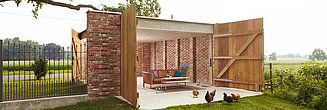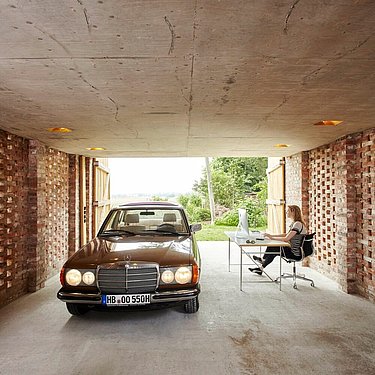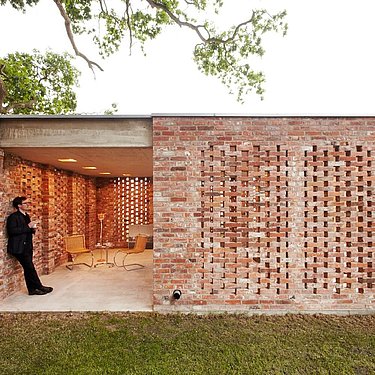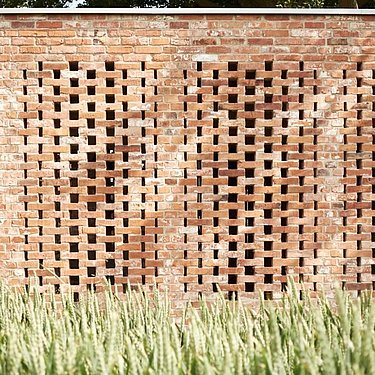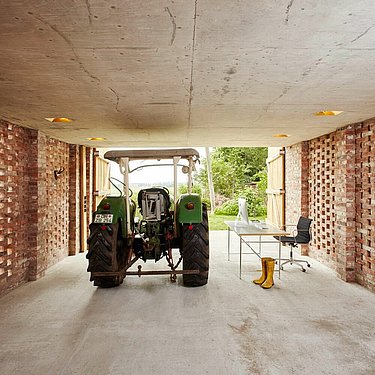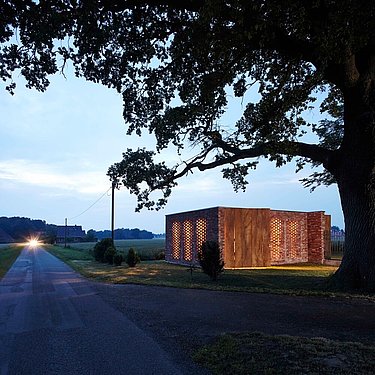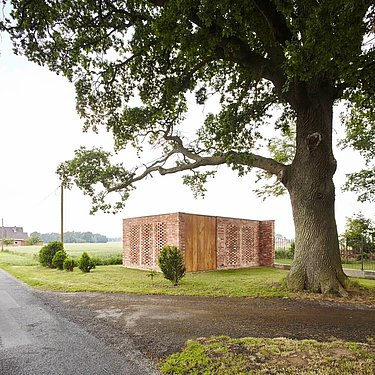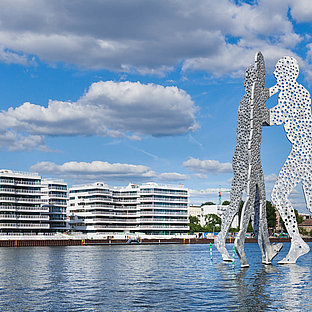Young German Architects #3: Wirth Architekten
1 min readSo far, their portfolio includes mainly small projects – which, however stand out by well thought-out concepts and careful planning. Their goal: “Creating special rooms and a festive ambience” for commonplace or even dull functions with passion. For beautiful rooms also add beauty to the activities taking place inside them. Their current highlight project is the coach pavilion, which has just been nominated for the German Design Award 2018 by the German Design Council.
Originally, this brick building was intended to become simply as a garage. But it developed into a pavilion which now offers much more. The building was added to a typical old farmhouse complex of the North German region and provides a new, impressive cornerstone for the estate. Traditional materials were used in construction. From a distance, the pavilion appears like a massive, closed cube. On coming closer, the filigree structure of the pierced masonry becomes visible, and one can see the wooden wall of the floor-to-ceiling entrance gates.
Depending on the season of the year, the new pavilion is used for storing and chopping up firewood, as a shelter for a tractor and grassland cultivation equipment, and for parking cars. In summer, when the building is empty, the room serves as a garden loggia for receptions and garden parties. A function not included in the original requirements list, yet fulfilled by the building with authenticity.
The bricks for this building were taken from a nearby burnt-out ruin. The wood for the gates came from an oak-tree, which had been struck by lightning 15 years before and had been standing dead on a neighbouring meadow ever since. After it was felled by a storm, it was cut into broad planks at an adjacent saw mill.
All of this makes the building extremely sustainable and resource-saving, since no new bricks had to be fired for its masonry, and the transport distance between the ruin close by and the building site was very short. What has been created is an impressively flexible place with a natural aesthetic appeal.
